#army air corps
Text

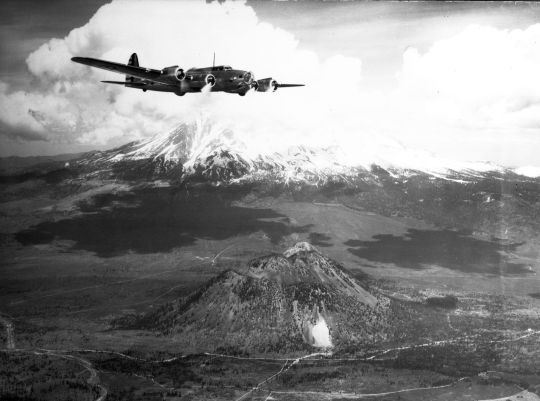
Boeing Y1B-17 Flying Fortress flying near Mt Ranier, Washington.
From the Paul Fedelchak Collection.
Date: February 28, 1938
San Diego Air and Space Museum Archive: link, link
#Boeing B-17 Flying Fortress#Boeing B-17#B-17 Flying Fortress#B-17#Flying Fortress#Bomber#Y1B-17#Mt Ranier#Washington#United States Army Air Corps#U.S. Army Air Corps#US Army Air Corps#Army Air Corps#Air Corps#USAAC#February#1938#my post
138 notes
·
View notes
Text

USAAC Fokker Y1C-14A Transport photographed 22 Sep 1931 at Wright-Patterson AFB
#USAAC#Army Air Corps#Fokker#Y1C-14#Military Transport#aircraft#vintage aviation#vintage photo#airplane#plane
20 notes
·
View notes
Text

Captain Colin Kelly was a World War II B-17 Flying Fortress pilot who flew bombing runs against the Japanese navy in the first days after the Pearl Harbor attack. He is remembered as one of the first American heroes of the war after ordering his crew to bail out while he remained at the bomber's controls trying to keep the plane in the air before it exploded, killing him. His was the first American B-17 to be shot down in combat.
* Kelly was with the 14th Bombardment Squadron, 19th Bombardment Group, United States Army Air Corps
Colin Purdie Kelly Jr. died December 10, 1941 at the age of 26.
#love#wwii#vintage#pearl harbor#B-17#united states#army air corps#west point#respect#remembrance#flying fortress#colin kelly#hero#1940s#florida#philippines#december
256 notes
·
View notes
Text
The Army General Classification Test (AGTC) was a 40-minute, 150 multiple choice question comprehensive test used in WWII to evaluate verbal, quantitative, and spatial abilities of recruits. The Army used this exam to divide up men into one of five categories based on their raw scores:
Class 1: 130+
Class 2: 110-129
Class 3: 90-109
Class 4: 70-89
Class 5: 69 or lower
Though intended to measure one’s intelligence, the test seemed to be more of a measure of education. Regardless, it was still a reasonable way of measuring a recruit’s ability level.
The Army Air Corps received a very high number of men who scored in Classes 1 and 2. In 1942 and 1943, approximately 44% of men in the AAC scored in Class 1 or Class 2, with an additional 35% scoring in Class 3. But it’s important to remember that the Army Air Corps ONLY accepted volunteers. Of course, there’s more intensive training and exams that recruits must pass in order to become a Pilot, Copilot, Navigator, or Bombardier, but scoring high was an important first step.
#I just know Crosby scored the highest of our flyboys and I REFUSE to believe anything else#everyone’s at Thorpe Abbotts boasting about their scores and he doesn’t immediately offer his up#but then someone asks and he’s like uhhhh but bubbles is like ‘he got a 129’#then Crosby complains about how the wording on the question was ambiguous#mota#masters of the air#wwii#8th air force#100th bomb group#agct exam#agct#Army General Classification Test#army air corps
17 notes
·
View notes
Text
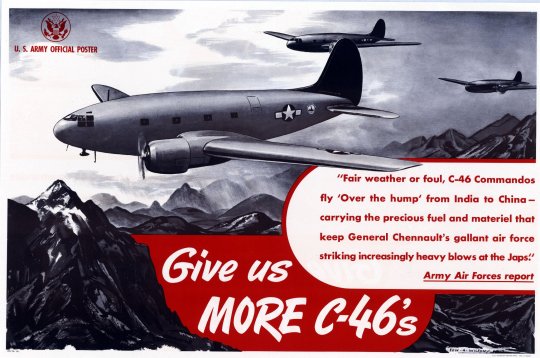
Uh-huh.
23 notes
·
View notes
Text

1942 diagram illustrating the amount of firepower a formation of four B-17 Flying Fortresses could bring to bear on intercepting fighters from various angles.
22 notes
·
View notes
Video
No man is a leader until he is ratified in the minds and hearts of his men.
- Field Marshal Sir Bill Slim, 1st Viscount Slim (1891-1970)
I’m not the only one, as an army veteran, to have gotten goosebumps when the assembled soldiers of all the regiments of the British armed forces cheered their new king and commander-in-chief. I never felt more proud to have had the privilege to serve in the best army in the world.
The newly crowned King Charles III inspected thousands of military personnel who lined up in the lush gardens of Buckingham Palace as he returned from Westminster Abbey. King Charles and Queen Camilla stepped out onto the West Terrace steps to look upon the assembled four thousand men and women who hadn’t faced him throughout the coronation procession but had led the way. This was their opportunity to see their sovereign face to face. And it was glorious. The gusto of the ‘hip hip hurrays’ was incredible, more so because it was sincere.
Those who have served in the British armed services - and those relatives and friends who have someone they know who serves or has served - know how deep the bond is between the royal family and the regiments that make up the British army as well as of course the Royal Navy and Royal Air Force. The royals have faithfully served as colonel-in-chiefs of many regiments and corps, and they have taken the responsibility seriously.
When he was the Prince of Wales, Charles was the colonel-in-chief of the Army Air Corps and he took particular interest in the welfare of the men and women of the regiments. He was very personable and appreciative of the service of every soldier and officer did, and in return he earned the loyalty and respect of every serving soldier I knew.
While King Charles III may be the head of the whole of the UK's Armed Forces, there is one company with which the sovereign has a special connection. The King's Company Grenadier Guards have a role at the centre of every coronation, but their relationship with His Majesty is far more personal than that - he is also their Company Commander.
One of the oldest bodies of troops in the Army, the King's Company was founded in 1656, even pre-dating the Restoration of the Monarchy in 1660. Following King Charles II's defeat at the Battle of Worcester in 1651, he escaped to Holland with the help of loyalists, who hid him and helped him throughout his exile and with his plan to return to the throne. From these loyalists, the King created his most trusted personal troops, that would go on to become the Life Guards and the Grenadier Guards.
King Charles II ordered that the command of the first company of the first regiment of Foot Guards would be reserved for him, and they would be known as The King's Own Company.
In 1656, the exiled King Charles II issued the first Colour bearing his cypher to The King's Own Company. Every monarch since has presented their company with their own Royal Standard. King Charles III presented a new Colour bearing his cypher interlaced and reversed with his crown to The King's Company.
In keeping with tradition, this new Royal Standard is of heavily gold embroidered and tasselled silk and it is much larger than the standard regimental Colours seen elsewhere on parade in the modern Army - the fabric alone is more than 6ft square.
The King's Company Colour, Royal Standard of the Regiment, has personal significance to both King Charles and Queen Camilla, as Her Majesty is the new Royal Colonel Grenadier Guards. A smaller version of the Royal Standard of the regiment is also commissioned and is proudly flown above the Captain's office desk in barracks or on the wall of the operations room if deployed abroad. The smaller version is simply known as the Company Camp Colour and will be laid upon the coffin after the monarch's death and buried, as happened with the late Queen Elizabeth.
A lesser-known fact is that The King's Company does not have a sitting company commander, because the reigning monarch vested the executive authority for the daily administration of the company to a trusted and favoured subject, the appointment being designated the Captain Lieutenant – the title means quite literally to hold or 'tenant' the Captaincy, in lieu of the King. Shortened nowadays to simply 'The Captain' (who holds the rank of Major), this appointment has persisted for 367 years with 136 Captains over time leading the company on a Sovereign's behalf.
Due to this arrangement and to prevent any confusion, The King's Company second in command (who holds the rank of captain) is referred to as 'The Second Captain.' Within the wider regiment, all members of the company are collectively known as and nicknamed The Monarch's Mob.
The new sovereign assumed command of The Sovereign's Company on accession, meaning that on the death of Queen Elizabeth II in September 2022, the company's name changed from The Queen's Company back to The King's Company. The connection of the sovereign to the company is a close one beyond the public ceremonial, as the Captain will update the sovereign regularly on the company’s activities and operational commitments. Every Christmas, the King will receive The Captain's Statement, a brief annual report, along with a leather-bound photo album containing photographs of The Company's year. The soldiers who serve under the Captain are among the fittest and most able Guardsmen in the regiment and must demonstrate the highest values and standards and aspire to excellence.
It was fitting that it was the King’s Company that led the three cheers to the newly coronated King.
Vivat Regina Camilla! Vivat Rex Carolus! Vivat! Vivat! Vivat!
#slim#field marshal slim#quote#leadership#leader#coronation#british army#king charles III#monarchy#british#military#royal navy#RAF#armed forces#king's company#grenadier guards#salute#army air corps#royal standard#royalty#regiment
60 notes
·
View notes
Text
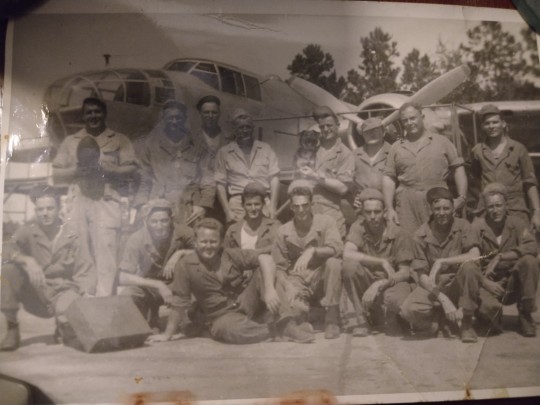
My mom came across this photo of my Grandpa from WWII. He was a mechanic in the Army Air Corps, what would become the Air force. He's the one holding the dog.
11 notes
·
View notes
Text
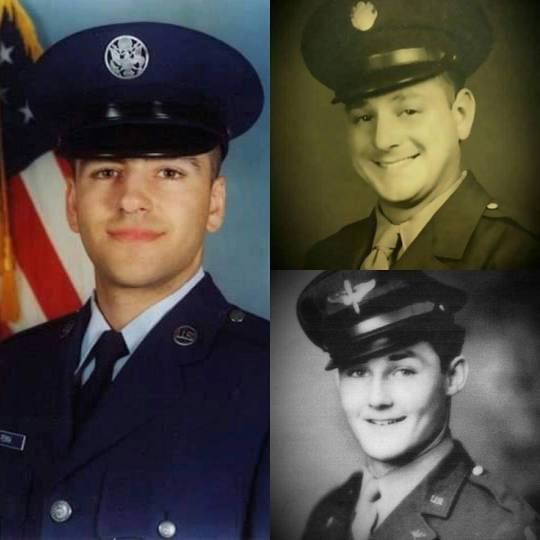
Happy Veterans Day!
Me on the left, my grandfather above and my uncle below...
13 notes
·
View notes
Text

"Consolidated B-24 Liberator, 15th Air Force, flies over smoke from bombs that struck at an enemy gun positions in the Sete area of Southern France."
Date: August 12, 1944.
NARA: 204897962
#Consolidated B-24 Liberator#B-24#bomber#World War II#World War 2#WWII#WW2#WWII History#History#August#1944#United States Army Air Corps#US Army Air Corps#Army Air Corps#Air Corps#USAAC#my post
254 notes
·
View notes
Text

British Army AH.7 landing at Middle Wallop, England
#Westland Lynx#AH.7#attack helicopter#Military#Army#Combat aircraft#aviation#British Army#Helicopter#Army Air Corps
48 notes
·
View notes
Text

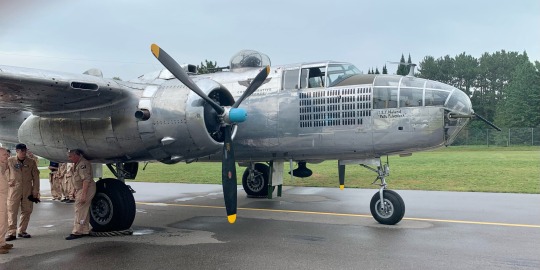

B25 landed at our little airport earlier today.
94 notes
·
View notes
Text
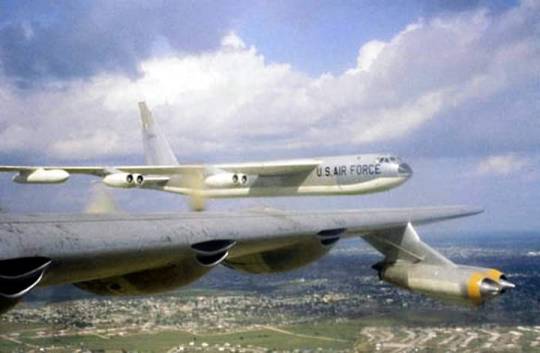
#USAF#USAAF#Army Air Corps#us military#us air base#us air national guardsman jack teixeira#us air force#us space force#jets#fighter plane#bomber
11 notes
·
View notes
Photo
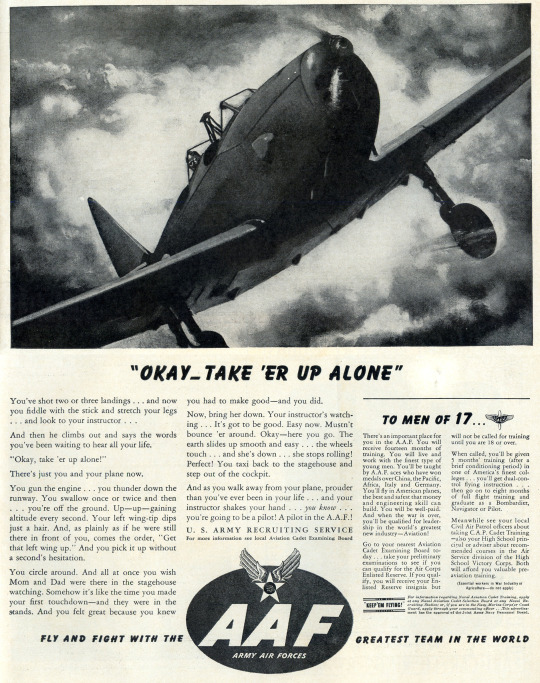
Life December 13th 1943
#vintage ad#vintage ads#advertising#advertisment#1943#wwii#us air force#army air corps#us army#soldiers#1940s#1940s ad#1940's#1940's ad#fighter plane
7 notes
·
View notes
Text

"LOOK, I KEPT TELLING YOU WE WERE TOO LOW OVER THE CHANNEL." Artist: Pfc. Frank Q. Hewitt
5 notes
·
View notes
Photo

All we have of freedom, all we use or know - This our fathers bought for us long and long ago.
- Rudyard Kipling, The Old Issue
I’m so far away from both Britain and France here in Dubai, that I forgot to pack my poppy and regimental pin to mark this solemn ocassion of remembrance. So here’s an old pic that has personal resonance to me to mark such a day in the past.
I had my calendar marked as I always do for such times but forgot to bring them on my posting here in Dubai, not thinking I would be extending my stay here. Surreal that Dubai celebrates every God damn festive celebration from around the world that isn’t its own and yet I don’t see anything to mark this monumental ocassion where literally men and women gave their lives so that we could live in a more peaceful world. It seems we only celebrate things that makes us feel good rather than give us pause to reflect on forgotten virtues like sacrifice, heroism, courage, and yes, even those most maligned of words, honour and duty.
These maligned words found their virtue in the example and sacrifices of all those who fought past two world wars. But now even the last of these old veterans of the second world war have all but passed away. All we have is nostagia. When we memorialise the Great War for example we honour its 10 million dead and 23 million mutilated. But, less obviously, we also mark the start of an ongoing, monumental collective effort of forgetting.
We should always remember those who gave all. At least we should try. For they are us. There are three deaths as someone once told me. The first is when the body ceases to function. The second is when the body is consigned to the grave. The third is that moment, sometime in the future, when your name is spoken for the last time.
One lives in the hope of becoming a memory. We are all the pieces of what we remember. We hold in ourselves the hopes and fears of those who love us. As long as there is love and memory, there is no true loss. Shakespeare said, ‘Praising what is lost makes the remembrance dear."
Lest we forget....
#red poppy#poppy#army air corps#AAC#remembrance#war#the fallen#veteran#british army#armistice day#kipling#rudyard kipling#guinness#comrades
113 notes
·
View notes